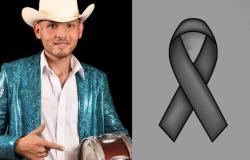Amid the reconfiguration of the world of organized crime, one of the most striking phenomena has been the appearance of a series of synthetic drugs that are flooding markets, including Chile. From this situation even the national prosecutor, Ángel Valencia, realized in his recent public account, last Tuesday.
In this public account, Valencia said that “during 2024 we observe a worrying turn in traffic trends, with a sustained increase in the circulation of synthetic drugs, which raises a growing challenge for public health, security and criminal persecution. Although this is a global trend, its arrival in our country requires a determined institutional reaction. Synthetic drugs are more difficult to detect and can cause serious damage with minimal doses, which amplifies its consequences and complexizes traditional inspection methods. ”
Indeed, it is more frequent every day to find dose of ketamine, fentanyl, MDMA (ecstasy) and even methamphetamines in different police operations, and they account for numerous investigations that have culminated with important seizures, such as that made by the Antofagasta Prosecutor’s Office regarding a methamphetamine laboratory that was handled by two Mexicans from the Jalisco New Generation Cartel Ketamine made by the Arica Prosecutor’s Office, interned to Chile by the Colombian organization “Los Costaños”.
However, there is also an incipient synthetic drug trafficking (many of them produced in Peru or Chile) that in turn are sent from Santiago to the United States.
In fact, in recent years, perhaps the best evidence of this is the accusation that weighs on one of the top leaders of the Aragua Train (TDA) in Chile, Larry Álvarez Núñez (currently detained in Colombia), who is charged with numerous crimes in Santiago, Los Vilos and Iquique. In this last city, in fact, the accusation that falls against him is precisely the sending of several kilos of ketamine to the United States, hidden in pool lighting lamps. According to the Prosecutor’s Office, Álvarez sent “water” (as they tell that drug to the interior of the ADD) towards the states of Florida and New York.
However, a recent investigation carried out by the Metropolitan Eastern Prosecutor’s Office, which culminated in the conviction of three Colombian citizens, left a different modality naked: synthetic drug microtrafficking from Santiago to Houston, Texas, a very attractive illicit market, since the metropolitan area of Houston-Fort Worth has 8 million inhabitants, that is, the same population of Santiago.
These were small shipments disguised in cosmetics jars, with a very peculiar characteristic: each bottle of Ketamine powder they sent weighed exactly 72 grams.
It may seem little, but as evidenced in the investigation, which began due to a complaint made by the American Dea to the OS-7 of Carabineros, each gram was worth 18 thousand Chilean pesos. Therefore, each bottle involved almost 1.3 million pesos and, as apparently it was harmless to makeup, they were in boxes of 12 bottles. Therefore, in each shipment 15.5 million pesos went.
And a detail nothing less, who was contributed by a Captain of the OS-7 in the trial in which the members of the group ended up condemned: “The interest of the agency (the DEA) was the problem of synthetic drugs and that from Chile a structure that would send to that country (USA)” would identify.
With Fanta or without Fanta?
By the way, the value increased, depending on whether the drug was “cut” with other narcotics. An undercover Carabineros, who entered treatment with the Colombian organization, who only operated in the eastern part of Santiago, organized a drug purchase to Colombians, one of whom asked him about WhatsApp if he wanted it “with Fanta or without Fanta.” As the DEA verified, from the shipments that it intercepted in Texas, the “Fanta” was actually MDMA, as well as fentanil, the most dangerous synthetic drug of today.
Thanks to police infiltration in the organization, three shipments were made to the United States, although one of those involved, a woman named Karen Bejarano Machado (which is not the television figure, is a name of name), which was in charge of sending the parcels through DHL, confessed by WhatsApp that “I still give me a little thing”, in reference to send drugs to the US.
Surely remembering the extraditions of Colombian drug traffickers to that country, he added that “that is strong.” Despite this, during the trial that the three were submitted, his defense assured that the woman was deceived, because she was convinced that what she sent to Houston were effectively boxes with cosmetics.
Who delivered them was a DJ called Fabián Cortés Londoño, nicknamed “El Conde”, which he says he met in “Plots”, private parties that are held in leased plots for this purpose on the outskirts of Santiago and that became known due to two five -year homicides committed by the train of Aragua in 2023 and 2024 in Batuco and Lampa.
The third involved in the events, which ended up detained by the OS-7 of Carabineros, just like Cortés and Bejarano, was also Colombian Carlos Obonaga Ramírez, who received money from the undercover agent to finance the drug operation towards the US.
The amounts
And although the figures in Chile seem modest, in the face of the great drug shipments that the headlines, as the same Carabineros officer explained before the third court of oral trial of Santiago, one kilo of ketamine powder in the United States can be worth between 21 thousand and 22 thousand dollars. By the way, “cutting” the drug, even increasing its volume with harmless chemicals, such as bicarbonate, its value can be doubled in the streets.
From that point of view, explains an anti -drug agent who works undercover, “it is a much safer business than traffic in large quantities, and that can also have important profit margins for traffickers.” In fact, the three accused in this case ended up being sentenced as drug trafficking authors in small quantities (which implies smaller sentences than in “dry” traffic).
The woman was sentenced to 3 years and one day, with the benefit of intensive featured freedom. Obonaga, meanwhile, received two sentences of 3 years and one day, both for microtrafficking and for the possession of a forbidden weapon (a fogueo gun adapted to shoot, which was found in his department). In turn, “El Conde” received a 5 -year penalty that, like Obonaga, must pay with jail, because in his case this was not his first foray into synthetic drug trafficking.
In fact, in 2022 he was arrested by personnel of the anti -narcotics brigade of the Pudahuel airport, after in a parcel from England, 1.5 kilos of MDMA were found that were destined for him and that were intermediated by two Chileans. When the PDI broke into its department on Chiloé Street, it also found 151 grams of cocaine, 3,500 MDMA pills, 49 grams of marijuana and 42 fentanyl bottles.
Due to the volume of narcotics, he was accused of drug trafficking and, in an abbreviated procedure, where he accepted his responsibility in the facts, he ended up sentenced to 5 years of prison, but received the benefit of monitored freedom.






